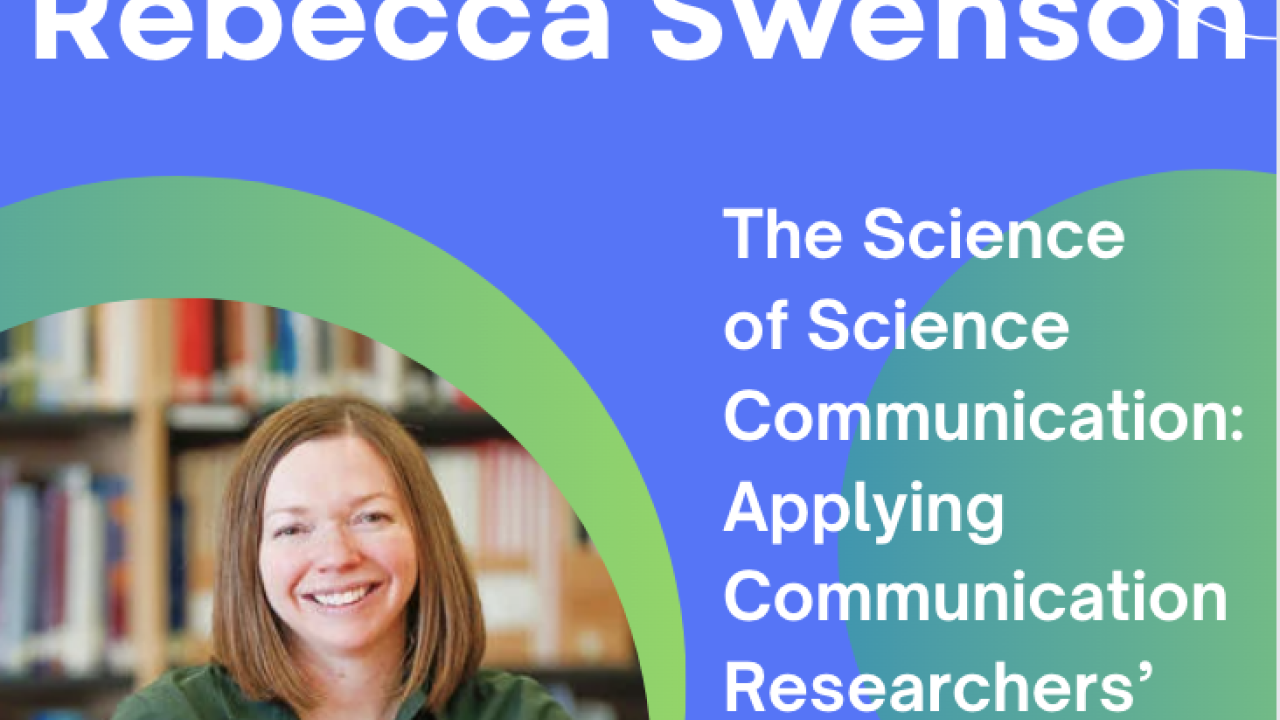
Science Says Presents: Dr. Rebecca Swenson
Quick Summary
- Science Says hosted Dr. Rebecca Swenson, master science communicator and Associate Professor of Agricultural, Food, and Natural Resource Communication at the University of Minnesota
Dr. Rebecca Swenson visited UC Davis to give a talk on “The Science of Science Communication: Applying Communication Researchers’ Greatest Hits.” Dr. Swenson is an Associate Professor of Agricultural, Food, and Natural Resource Communication at the University of Minnesota. Her work centers around how topics and debates related to agriculture, food, and the environment are discussed in the media, by organizations, and in the community. Dr. Swenson teaches a number of undergrad courses and is hoping to expand to graduate-level coursework and opportunities at the University of Minnesota and stated that she was excited to listen more than she spoke. Her science communication expertise made her a wonderful visitor for Science Says.
Dr. Swenson’s talk centered around communication theory and how it can be applied to communicating science. She began by introducing several communication theories, such as the theory of reasoned action, which states that attitudes and social norms influence behavioral intention, which in turn affects behavior. Dr. Swenson then explained five key considerations when communicating science:
- Focus on behavior. Information is not communication. Successful communication involves wanting your audience to do something with what you are communicating. Figure out what the behavior is that you want people to do from your communication. Sometimes this can be challenging for researchers to identify, and she explained that the behavior can be as simple as walking away from the conversation knowing a new fact about your science, or having a clearer understanding of a certain topic. Other times the desired action could be knowing and sharing or implementing that new fact with the people around them in their daily lives.
- Important others matter. Who does your audience know and how are they influenced by them? Think about what social influences, norms, and judgments influence your audience. For example, will your topic of conversation cause conflict or tension in their social circle which may hinder them from adopting the desired behavior?
- Address efficacy. Set your audience up for success. You can do this by recalling positive experiences or offering trial opportunities, demonstrating what success looks like, and offering direct encouragement.
- Know audience resources, know audience barriers. Understand what your audience knows, feels, practices, and what connections they foster. Also understand their common practices and barriers and how that may affect your desired behavior.
- Build a bridge to action. What else do you need to do to help your audience? Think about how else you can set them up for success.
Dr. Swenson’s talk highlighted the importance of having a desired outcome, behavior, or action when communicating, otherwise, you are solely providing information, a distinction we were all struck with when it was offered up so simply on one of her opening slides. This differs greatly from the academic researcher’s perspective on sharing science which is often to simply give facts and findings through research articles. However, transforming scientific information into communication is easily achievable by discussing future research or practical applications.
During the discussion portion of Dr. Swenson’s talk, there were many questions on how to promote science communication to faculty, graduate students, and postdoctoral scholars, identifying a specific audience, distilling research down to the “so what?”, communicating your main point in the first ten seconds, and careers in science communication.
The Science Says leadership team is so grateful to Dr. Rebecca Swenson for visiting UC Davis and sharing her research on communication theory and giving us practical tips on how to be better science communicators.

Comments